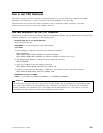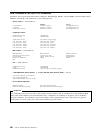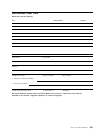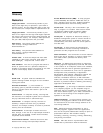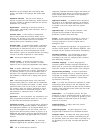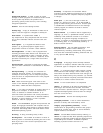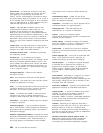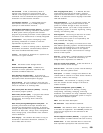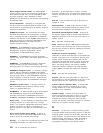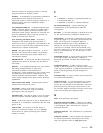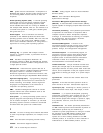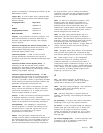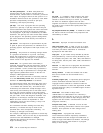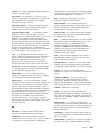CCYY format. A 4-digit-year format that uses two
century digits (CC) to indicate the century and two
year digits (YY) to indicate the year within the
century. The CC representation is provided as either
the actual century digits (for example, 18, 19, or 20) or
as an encoded value (for example, as 00 to represent
19, 01 to represent 20 as in, 0095 represents the year
1995 and 0195 represents the year 2095.)
century. Although IBM recognizes that the 21st
century begins at 0000 hrs, 2001-January-01, for
purposes of this document, we are defining the
20th—21st century boundary to be between 2400 hrs,
1999-December-31 and 0000 hrs, 2000-January-1. This
allows a discussion of the 21st century to include all
dates with a 20yy format inclusive of the year 2000.
Hence, the year 2100 is likewise relegated to the 22nd
century.
century byte. The high order byte of a field used to
contain the two high order digits of a 4-digit year. (For
example, 19 in 1995, 20 in 2000 and 2001).
channel-to-channel (CTC). A method of connecting
two computing devices.
character set. (1) An ordered set of unique
representations called characters; for example, the 26
letters of the English alphabet, Boolean 0 and 1, the
set of symbols in the Morse code, and the 128 ASCII
characters. (2) A defined collection of characters. (3)
All the valid characters for a programming language
or for a computer system.
checkpoint data set. A data set that contains
checkpoint records.
CICS. See Customer Information Control System.
CICS region. The CICS area of the computer system
in which an application is running.
close. (1) A data manipulation function that ends the
connection between a file and a program. Contrast
with open. (2) To end the processing of a file.
cluster. In systems with VSAM, a named structure
consisting of a group of related components; for
example, a data component with its index component.
coexistence. The ability of different types of systems
to support a program.
command language. A set of procedural operators
with a related syntax, used to indicate the functions to
be performed by an operating system. Synonymous
with control language.
Common Programming Interface. Definitions of those
application development languages and services that
have, or are intended to have, implementations on
and a high degree of commonality across the SAA
environments. One of the three SAA architectural
areas.
communication region. In VSE, an area of the
supervisor that is set aside for transfer of information
within and between programs.
compilation. Translation of a source program into an
executable program (an object program).
configuration file. A file that specifies the
characteristics of a system or subsystem.
console. A part of a computer used for
communication between the operator or maintenance
engineer and the computer.
context editing. A method of editing a line without
using line numbers. To refer to a particular line, all or
part of the contents of that line is specified.
control block. A storage area used by a computer
program to hold control information. Synonymous with
control area.
control language (CL). The set of all commands with
which a user requests functions. Synonym for
command language. See job control language.
control program. (1) A computer program designed
to schedule and to supervise the execution of
programs of a computer system. (2) See VM/370
control program, resident control program, IMS/VS
control program, VM/XA Migration Aid control
program.
conversational. Pertaining to a program or a system
that carries on a dialog with a terminal user,
alternately accepting input and then responding to the
input quickly enough for the user to maintain a train
of thought. See also interactive.
conversion (VSE/MVS). A process that modifies VSE
applications and data to meet MVS requirements.
copied member. A source text member that can be
included in a flow of source data by means of
COPY-like statements (COPY statements in
Assembler, COBOL, or RPG II; %INCLUDE statements
in PL/I; or any other alternate-COPY statements for
nonstandard text inclusion).
cosmetic. Referring to a 2-digit-year date that is
viewed by human eyes only, such as a print date on
hardcopy output or a date on a selection panel.
Because it is neither read nor further processed by a
program you might be able to exclude its modification
from your Year2000 work effort.
Customer Information Control System (CICS). An
IBM-licensed program that enables transactions
entered at remote terminals to be processed
concurrently by user-written application programs.
568 VSE to OS/390 Migration Workbook




